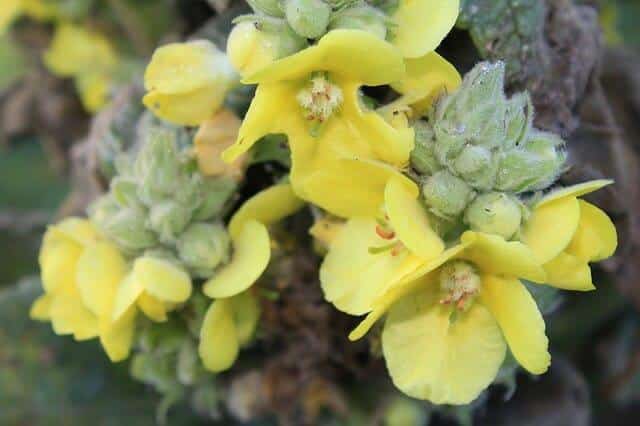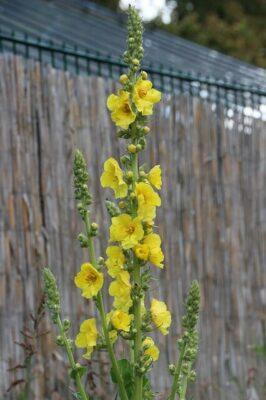It was native to Europe, northern Africa and Asia, and then was introduced to the Americas and Australia. You might know it by some of its other common names, such as feltwort, blanket leaf, candlewick and velvet dock.
It is Mullein, a common backyard weed the Native Americans used. And it has surprising medicinal properties.
Identifying Mullein
Mullein can grow, when left alone, up to seven feet tall, with large leaves covered in silver and felt-like hairs. Once blossomed, the flowers are yellow and take up half of the stem. The plant flowers from November to March. Most people consider it a nuisance, but there is so much more to the plant!
Medicinal Purposes of Mullein
For a plant that typically shows up in dry, barren places, mullein has impressive medicinal properties. You can use most of the plant, including the root. The leaves and flowers are the most common parts used. Infused oils, tinctures, capsules, lozenges, herbal teas and poultices are all common application methods for mullein.
Make Powerful Herbal Medicines, Right in Your Kitchen!
For centuries, people used mullein in herbal remedies, such as to soothe the respiratory tract. But it can do so much more.
1. Flu. Preliminary research shows that mullein has properties to fight flu-causing viruses. Of course, the flu can be dangerous, so seek medical help if you experience worsening symptoms.
2. Pain. Mullein has analgesic properties that have a numbing effect on your nerves. It is a great choice to stop transmitting pain to the brain. Toothaches and headaches can be relieved with mullein.
3. Inflammation. One of the main benefits of mullein is its anti-inflammatory properties. You can use it to treat nasal or respiratory tract inflammation, inflammation of the digestive system, and inflammation caused by fever or infection. If you experience a burn, try to apply mullein oil directly to the burn or inflamed skin.
4. Ear infections. Do you or your children experience chronic ear infections? Mullein oil can reduce ear pain significantly; make an infused oil, which taps into the antibacterial properties.
5. Coughs. If you have a cold or upper respiratory infection that causes excess secretions of phlegm, then mullein is an excellent expectorant. You can make lozenges that contain mullein or find them in your local health food store. Some Native American tribes believed mullein could cure chest diseases. For example, the Navajos would mix mullein with tobacco and smoke it to help with coughing spasms. I wouldn’t recommend that, but many people still use mullein in an herbal tea for coughing.
6. Relax/sleep aid. Mullein has a relaxing effort on your brain and other bodily systems. You can use it to treat muscle cramps, nervous disorders, stress, anxiety and more. Because of its relaxant properties, mullein also reduces blood pressure. Many people use mullein to help with chronic insomnia. If you need a good night’s rest, then try drinking a warm cup of mullein tea.
7. Hemorrhoids. No one likes hemorrhoids. A poultice created with mullein leaves can be applied to hemorrhoids to help stop the swelling and irritation.
8. Respiratory issues. In general, one of the most common applications of mullein is for respiratory issues. Asthma, bronchitis and allergies can be treated with mullein tea. It also is effective against sore throats, as well as the other listed issues such as coughing and spasms.
Have you ever used mullein for any herbal remedies? Let us know in the comments section below!
 Off The Grid News Better Ideas For Off The Grid Living
Off The Grid News Better Ideas For Off The Grid Living





